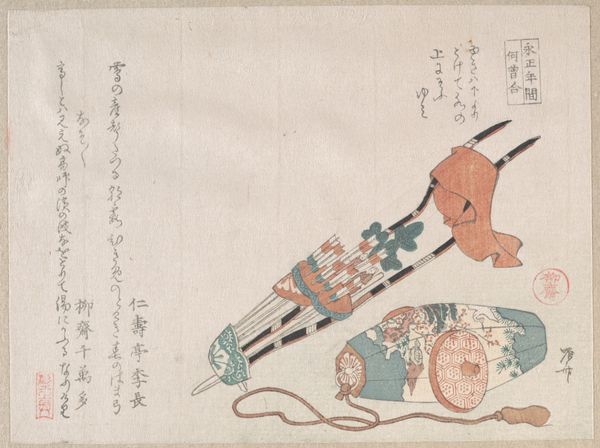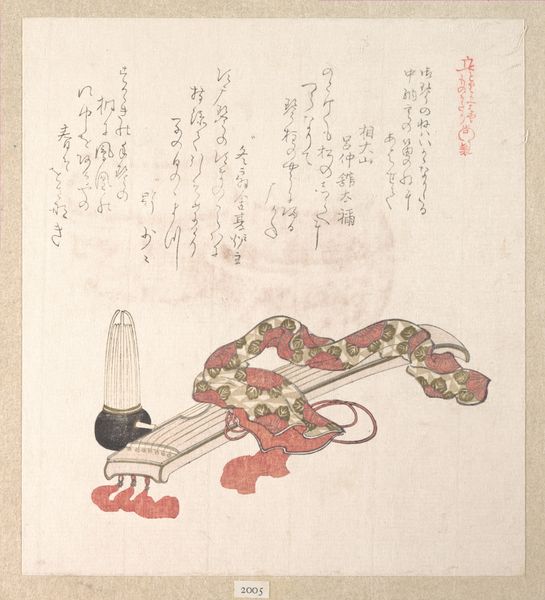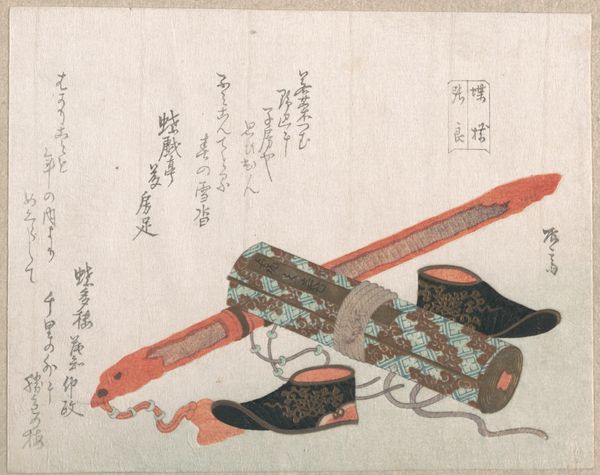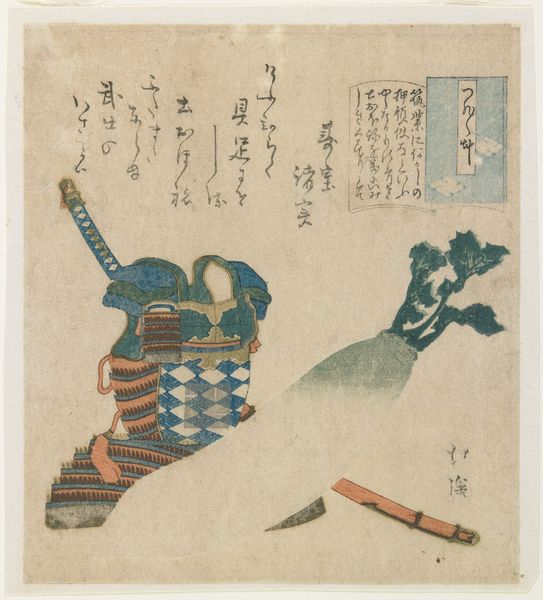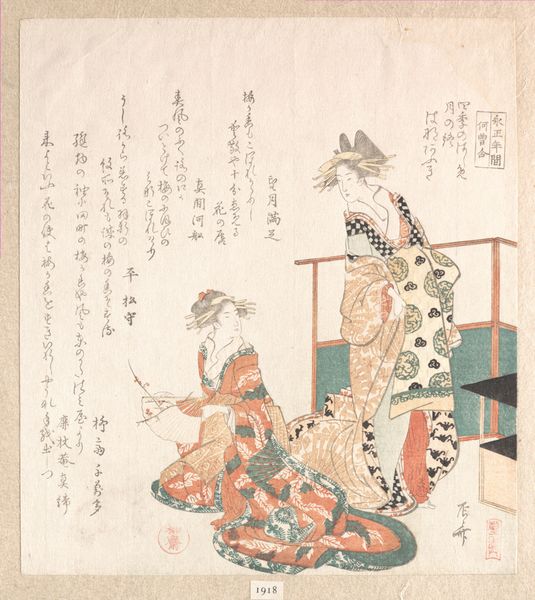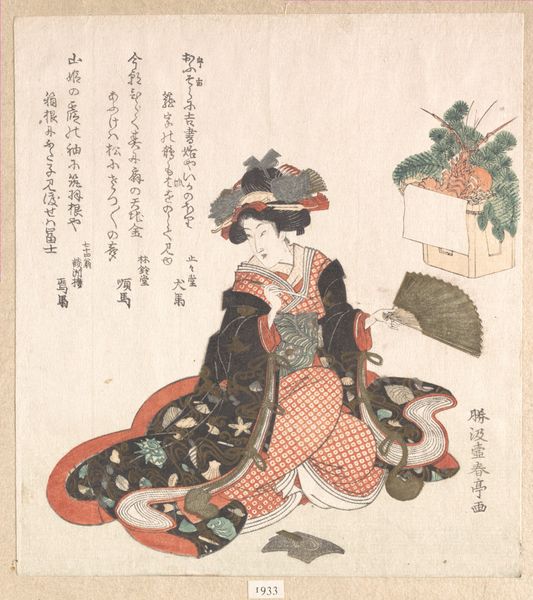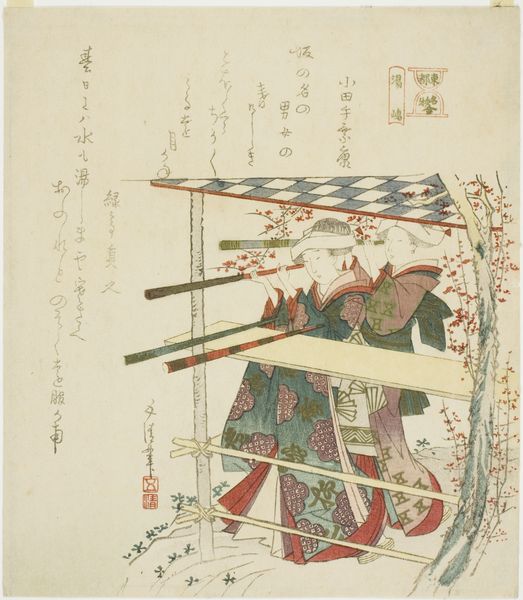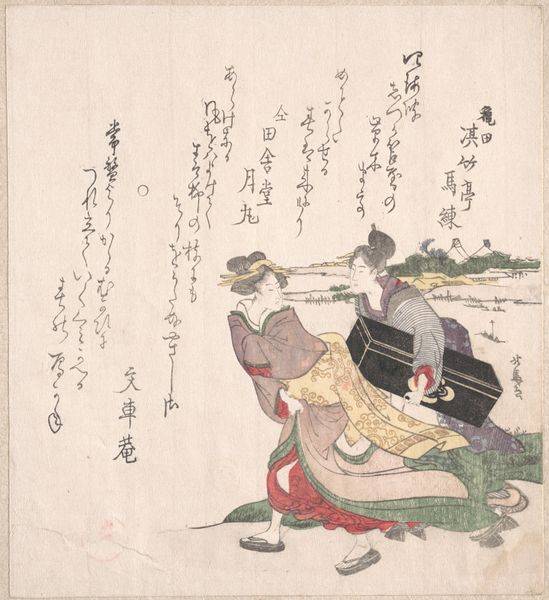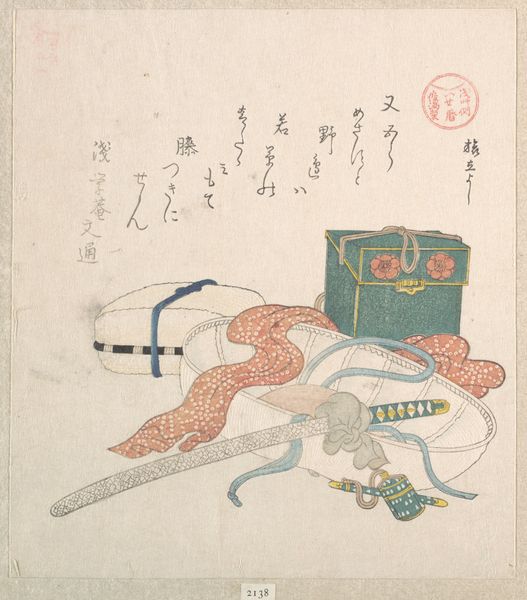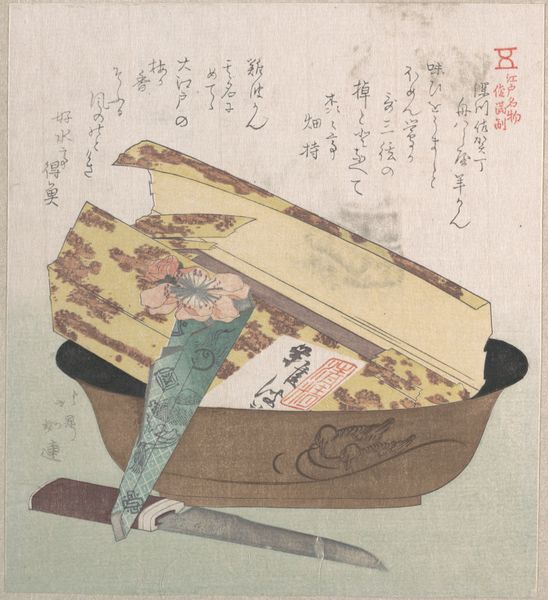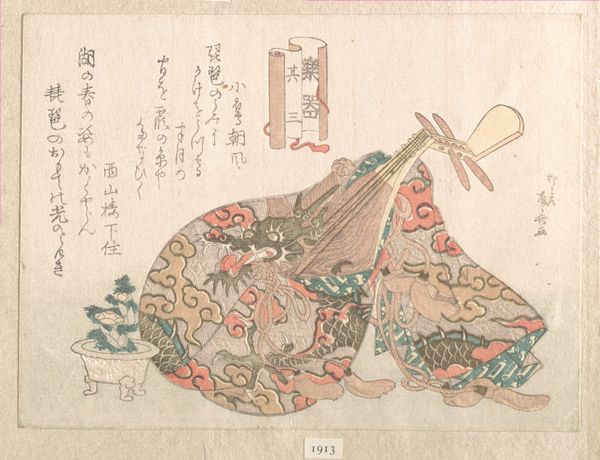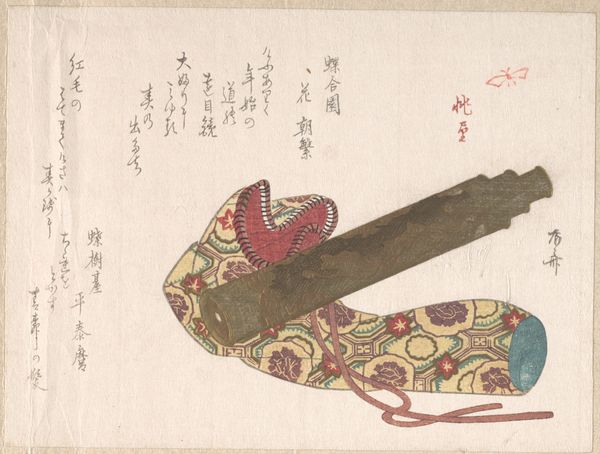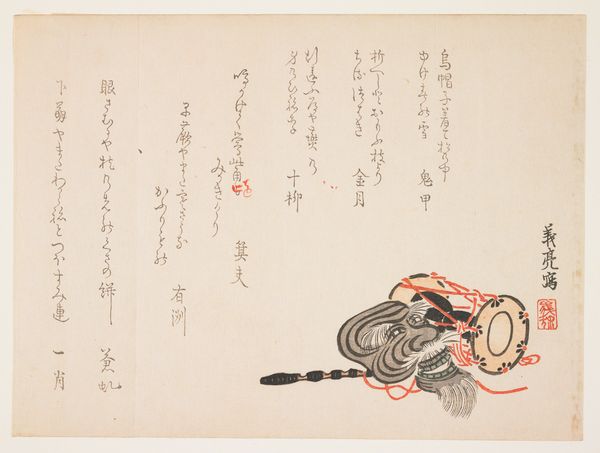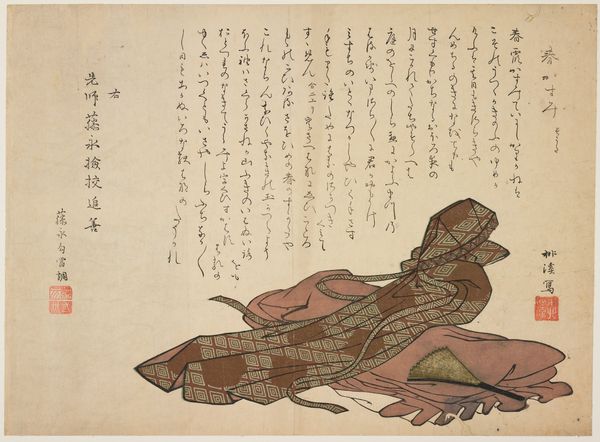
Hama-Yumi and Buriburi-Gitcho, Boy's Toys, for the New Year Celebration 19th century
0:00
0:00
print, watercolor
#
water colours
# print
#
asian-art
#
ukiyo-e
#
watercolor
Dimensions: 7 7/8 x 7 3/16 in. (20 x 18.3 cm)
Copyright: Public Domain
Curator: Here we have a 19th-century print by Kubo Shunman titled "Hama-Yumi and Buriburi-Gitcho, Boy's Toys, for the New Year Celebration." Editor: My first thought is how delicate it feels. The watercolors give it a soft, ephemeral quality. You can almost smell the paper and ink. Curator: Absolutely. And look at the details, the way the wood grain is suggested, the woven texture of the arrow quiver. These are crafted objects depicted with clear attention to the labor involved in their production. Ukiyo-e prints were also a popular and commercial art form available to a broader audience than other art. Editor: The bow and arrows and the Buriburi-Gitcho – the toy chariot – aren't just toys, though, are they? The bow and arrow, Hama-Yumi, has deep symbolic roots in warding off evil. This image is made for the New Year to bring good fortune. Curator: I see the toys as representations of aspiration for the boys: future warriors or leaders. A beautifully produced commodity meant for celebration, connected to class. Consider also that watercolor on paper produces particular effects. The bleeding edges of color suggest a kind of ethereal luxury in what we can imagine would have been everyday celebratory objects for wealthy children. Editor: Notice the colors – muted pinks, yellows, and blues. These aren’t jarring, primary colors. They speak to refinement and tradition. And the butterflies on the toy chariot – are they mere decoration, or symbols of transformation and joy, appropriate for welcoming the new year? Curator: It is a beautiful example of an everyday domestic scene captured for an elite class of consumer during a time of cultural change, these toys serve as a clear window into social and production dynamics in Japan at the time. Editor: It is fascinating how such simple objects – toys, even – can become vessels carrying complex cultural meaning. I now see how it balances material reality and cultural imagination. Curator: Indeed. By looking at the craft involved and the printmaking tradition, as well as the cultural symbols represented in this image we gained a great deal.
Comments
No comments
Be the first to comment and join the conversation on the ultimate creative platform.
